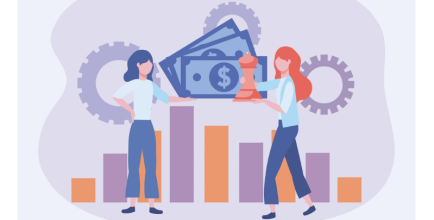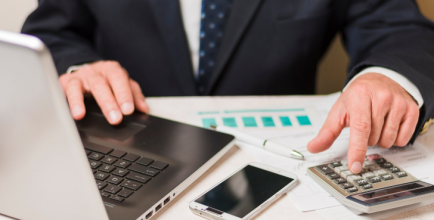Managing Email Distractions
At first glance, it might seem surprising, but email is one of the leading culprits when it comes to workplace distractions. Many find themselves spiraling down into the abyss of their inboxes, spending countless hours responding to an unending stream of messages from clients and colleagues. While it’s unrealistic to eliminate email usage, given its role as a fundamental tool for communication in most businesses, it’s crucial to implement strategies to prevent it from hampering productivity. Similarly, communication platforms like Slack, while helpful, can lead to the same pitfalls if not properly managed.
Strategies for Email Management:
- For Gmail users, employing shortcuts can vastly improve efficiency. For instance, using the shortcut https://mail.google.com/mail/u/0/?fs=1&tf=cm allows you to compose an email directly, bypassing the need to scroll through your inbox.
- Designate specific times within your day exclusively for checking and responding to emails. This will help you maintain focus on other tasks without getting sidetracked.
- Disable email notifications during times outside your scheduled email checking blocks to minimize distractions and maintain focus on the task at hand.
Navigating Smartphone Distractions
Smartphones, while indispensable in today’s world, are potent sources of distraction. With an endless stream of notifications from text messages, social media interactions, and news alerts, it’s easy to get derailed from productive work. Indeed, the allure of smartphones can be so strong that even the most disciplined individuals find themselves checking their devices more often than necessary. Breaking the smartphone distraction cycle is challenging but essential for maintaining productivity.
Strategies to Mitigate Smartphone Interruptions:
- You can use your smartphone’s focus or do not disturb mode to temporarily disable notifications from specific apps. This feature is available on both iOS and Android platforms, allowing for undisturbed work periods.
- Consider setting your phone to airplane mode during peak productivity hours, ensuring that only the most urgent calls are allowed.
- For tasks that require deep concentration, physically separate yourself from your smartphone by keeping it in another room. This eliminates the temptation to check it constantly and helps maintain focus on the task at hand.
Handling Co-Worker Interruptions
While the concept of open-plan offices was designed with collaboration in mind, it often brings about a significant challenge in the form of co-worker interruptions. While some individuals thrive amidst the hustle and bustle, others find it increasingly difficult to concentrate, with the constant activity acting more as a distraction. The possibility of being interrupted by a colleague can prevent one from fully immersing in tasks that require deep focus.
Strategies to Minimize Distractions from Co-Workers:
- Implement a desk signaling system such as a color-coded card where green indicates openness to interruptions and red signals a do-not-disturb mode. This simple visual cue can effectively communicate your availability to colleagues without verbal interaction.
- Arrive at the workplace earlier to capitalize on the quiet hours before the majority of your team arrives. This timeframe can be incredibly productive for deep, uninterrupted work.
- Invest in a pair of noise-canceling headphones to drown out background chatter and signal to others that you are in a focused mode and prefer not to be disturbed.
Dealing with a Cluttered Work Environment
Often underestimated, the impact of a cluttered workspace on one’s mental well-being and productivity can be profound. A disorderly desk can subtly contribute to stress levels and hinder your ability to focus. Conversely, a neat and organized workstation can promote a sense of control and enhance efficiency. Fortunately, decluttering your workspace is a straightforward task that can yield significant benefits.
Strategies for Maintaining a Clutter-free Desk:
- Incorporate desk tidying into your daily routine to ensure your workspace remains orderly.
- Limit the items on your desk to what is necessary, removing any non-essential objects that can contribute to clutter.
- Refrain from eating at your desk to avoid unnecessary mess and distractions, keeping your workspace dedicated solely to work tasks.
Overcoming Multitasking Challenges
Despite common misconceptions, multitasking can drastically decrease productivity by fragmenting our focus. The illusion of multitasking makes us feel busy but inefficiently spreads our attention. The secret to improved focus and productivity is avoiding multitasking altogether.
Strategies to Combat Multitasking Temptations:
- Cultivate Mindfulness: Practice mindfulness to enhance your focus on the present task, reducing the tendency to juggle multiple activities.
- Simplify Your Workload: Avoid packing your schedule. Prioritize and tackle tasks sequentially to boost productivity and work quality.
- Select Appropriate Background Music: Instrumental or ambient music can aid concentration, whereas lyrics may distract and dilute focus.
Addressing Hunger-Related Distractions
Hunger is a fundamental distraction that can subtly undermine productivity, often going unnoticed. Rather than being overtly signaled by stomach growling, hunger can insidiously present itself through irritability or a decrease in focus.
Strategies to Prevent Hunger Disruptions:
- Be Attentive to Hunger Cues: Recognize and respond promptly to any signs of hunger to prevent it from impacting your concentration and mood.
- Consume a Nutritious Breakfast: Start your day with a substantial breakfast rich in whole foods to provide long-lasting energy and stave off hunger pangs.
- Incorporate Regular Healthy Snacks: Embedding healthy snacking into your daily routine can help maintain steady energy levels and prevent hunger from becoming a distraction.
Reducing Meeting Overload
Meetings are frequently cited as a significant obstacle to productivity. They often consume precious time that could be more effectively used for task completion, leading to frustration and a dip in efficiency.
Strategies to Limit Excessive Meetings:
- Designate Specific Times for Meetings: Reserve specific days and times for meetings to centralize discussions rather than allowing them to spread unpredictably throughout the week.
- Prepare Meeting Agendas in Advance: Drafting a meeting agenda beforehand can ensure discussions stay on point, making meetings more brief and productive.
- Assign Actionable Tasks Post-Meeting: End meetings by assigning precise, actionable tasks to attendees. Schedule future meetings only after these tasks have been completed, giving each meeting a measurable outcome.



